They’ll Keep Your Garden Mosquito Free (or close to!) All Summer Long!
Did you know that dragonflies are natural mosquito predators? These amazing creatures can eat hundreds of mosquitos in a day! In fact, mosquitos make up about 90 per cent of a dragonfly’s diet. Lucky for us, there are 154 species of dragonflies that call Canada home, so there are plenty of these beneficial insects you can attract to your backyard.
#1. Add a Water Feature
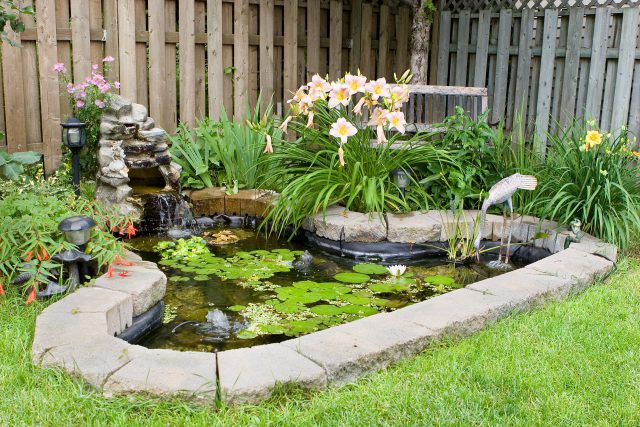
Dragonflies thrive near water, so you’ll want to add a water source in your backyard. Best bet? Add a pond. It might take up a bit of real estate on your property, but ponds are not only good for dragonflies – they’re serene for us too! When you’re deciding where to place the pond, pick a spot that’s sheltered from the wind and gets plenty of afternoon sun.
If you don’t have the space for a pond, don’t worry! You can create a mini garden pond instead. Simply grab a ceramic pot, add some stones to the bottom (and extra stones higher up towards the edge of the pot to give dragonflies a spot to perch), and fill it up with water. Add a bubbler to make it even more attractive to dragonflies.
#2. Offer Dragonflies a Place to Perch by the Pond
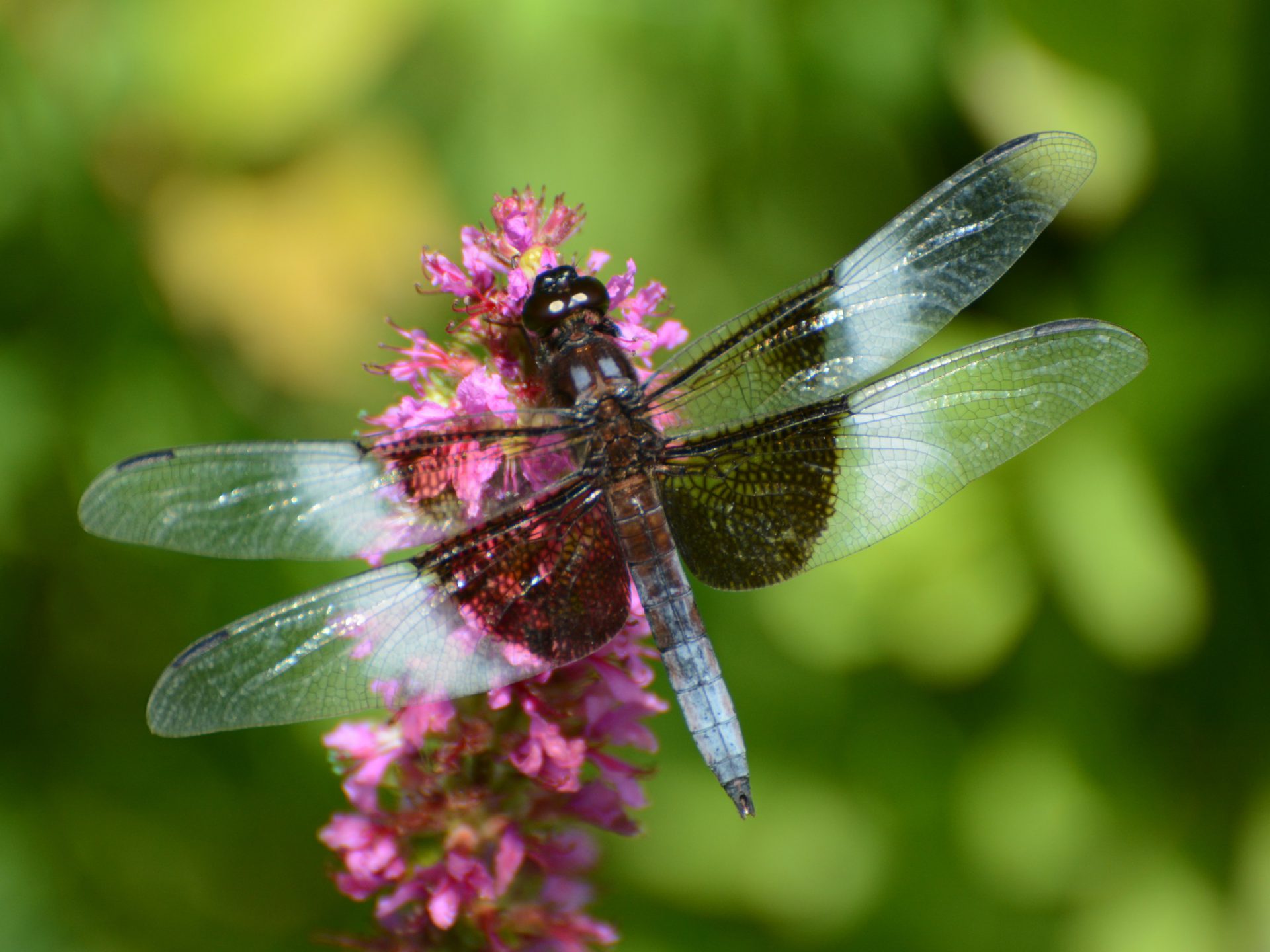
And if you do go ahead and build a pond, be sure to add some rocks around it. This will give dragonflies a place to rest and bask in the sun to keep warm. You can also add tall plants, shrubs and grasses to offer more perching spots.
#3. Add Pond Plants
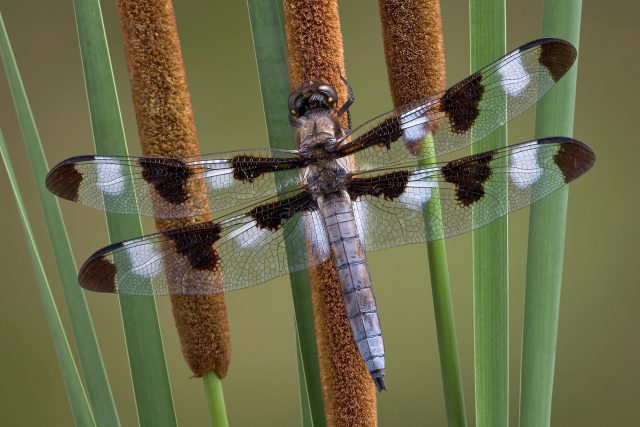
Pond plants not only give dragonflies a spot to hide away from predators, it also gives them a place to lay their eggs.
Add aquatic vegetation to provide nymphs with places to hunt for food and hide from predators. There are all sorts of plants that are perfect for your pond including:
- Cattail (Typha latifolia)
- Pickerelweed (Pontederia cordata)
- White bulrush (Scirpus albescens)
- Swamp milkweed (Asclepias incarnate)
- Joe Pye Weed (Eupatorium fistulosum)
#4. Ditch the Pesticides
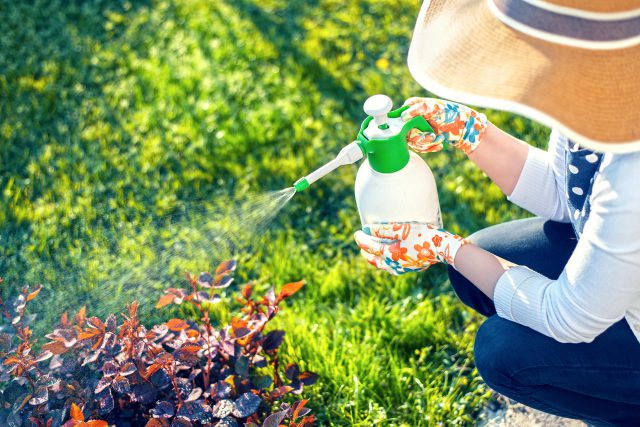
Pesticides don’t just kill off pests! They kill off all sorts of beneficial insects too including pollinators and dragonflies.
#5. Offer Native Plants
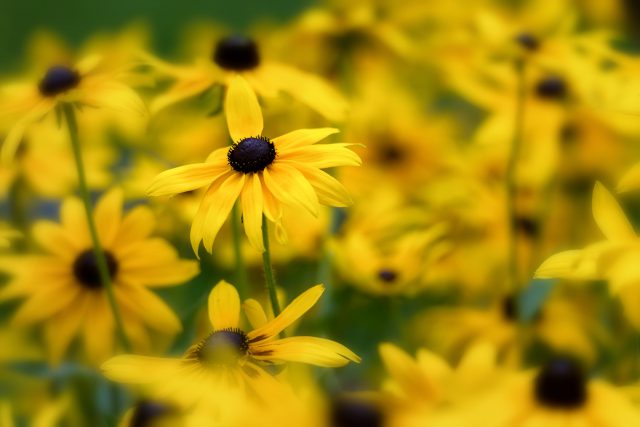
Native plants attract all kinds of beneficial insects, from bees to butterflies to dragonflies. Plant some Black-eyed Susan, White Yarrow or Meadow Sage if you want to attract dragonflies to your property!

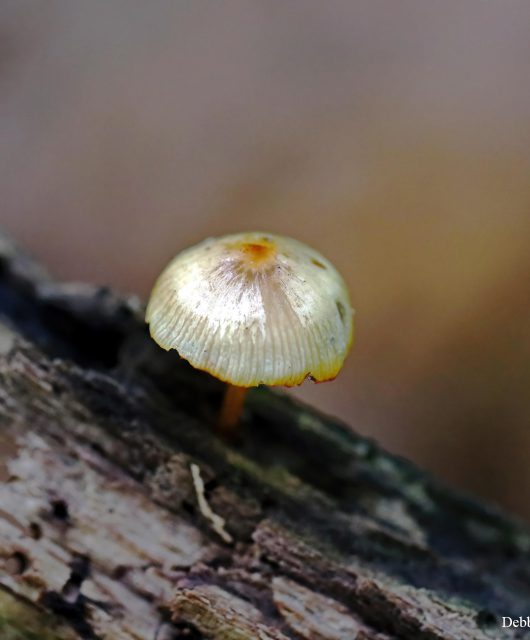
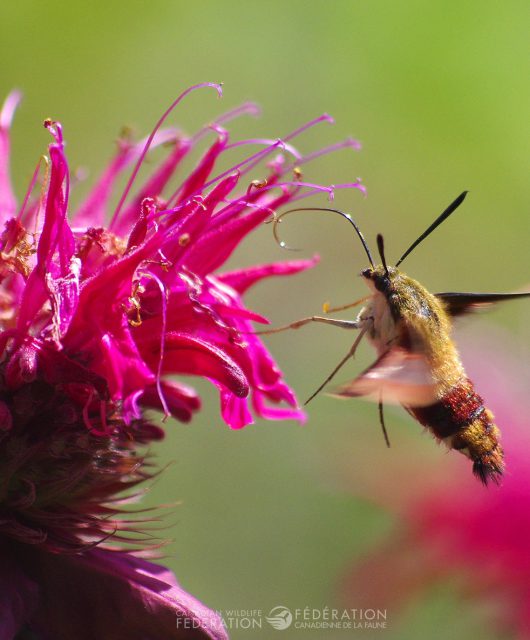

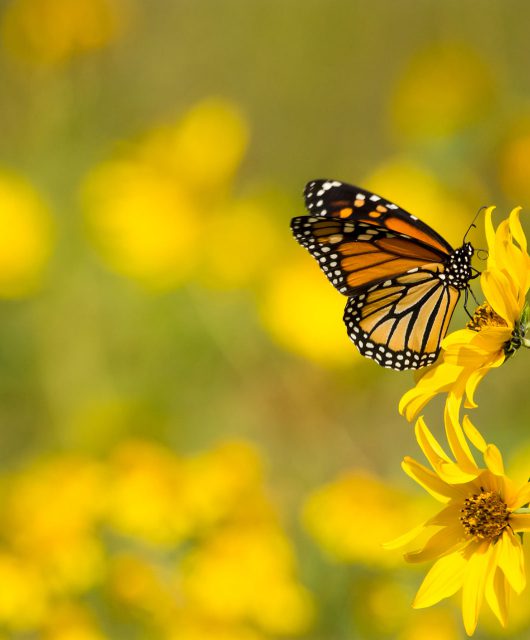
9 comments
I would love to find an environmental reporter who would help us fight against the construction of Canada’s biggest biodigester in North America.
Our marginalized community of seniors in High River, Alberta has major concerns about damage to our environment and lifestyle.
We are not being heard and need help to stop this please.
Hi Allison!
We’ve sent your comment to several freelance conservation writers. Good luck!
I would love to get more details on how to add a small pond to my backyard. Could you point me in the right direction of where I could find multiple pond project ideas for different backyard situations?
Thanks!
Hi Sarah, Here is a link that may help with ideas but otherwise we don’t have a resource for specific pond projects: https://cwf-fcf.org/en/explore/gardening-for-wildlife/tools/recreating-natural-habitats/ponds.html. You may wish to see if you have a business in your area that creates natural ponds and that encourage native plants. Years ago we had a local company install a natural pond in our demonstration gardens. They organized an annual pond tour where you could buy tickets (the money went to a charity) and then on a specific day, you could tour a number of properties that had ponds installed by this business. For a few years we were on the list and people enjoyed visiting the pond and learning about the native plants and other wildlife-friendly features in our garden as well. Perhaps you can find something like that, other than searching online for ideas or even a Facebook group.
I would also recommend having a compost pile. I have two compost piles (one is busy composting while the other is receiving new material) and they tend to attract a variety of insects, which are perfect dining options for dragonflies! I have a variety of dragonfly species that patrol the area around my compost heaps and I’m sure they love the flies, beetles, and other insects that also hang around the compost pile. I only put vegetable scraps on my compost heaps (not meat or dairy), yard waste, and also the clean-out from my chicken coop and rabbit litter boxes.
April, can you confirm for me that Meadow Sage is truly native to Canada (I’m in Ontario)? I have read that it is introduced here from Europe. Could you provide me with the Latin name so I can do some more research. Thanks for the interesting article.
Hi I would like to attract more dragon flies as I livein the bush area and lots of black flies and mosquitoes . I have absurd bath some rocks what else can I do